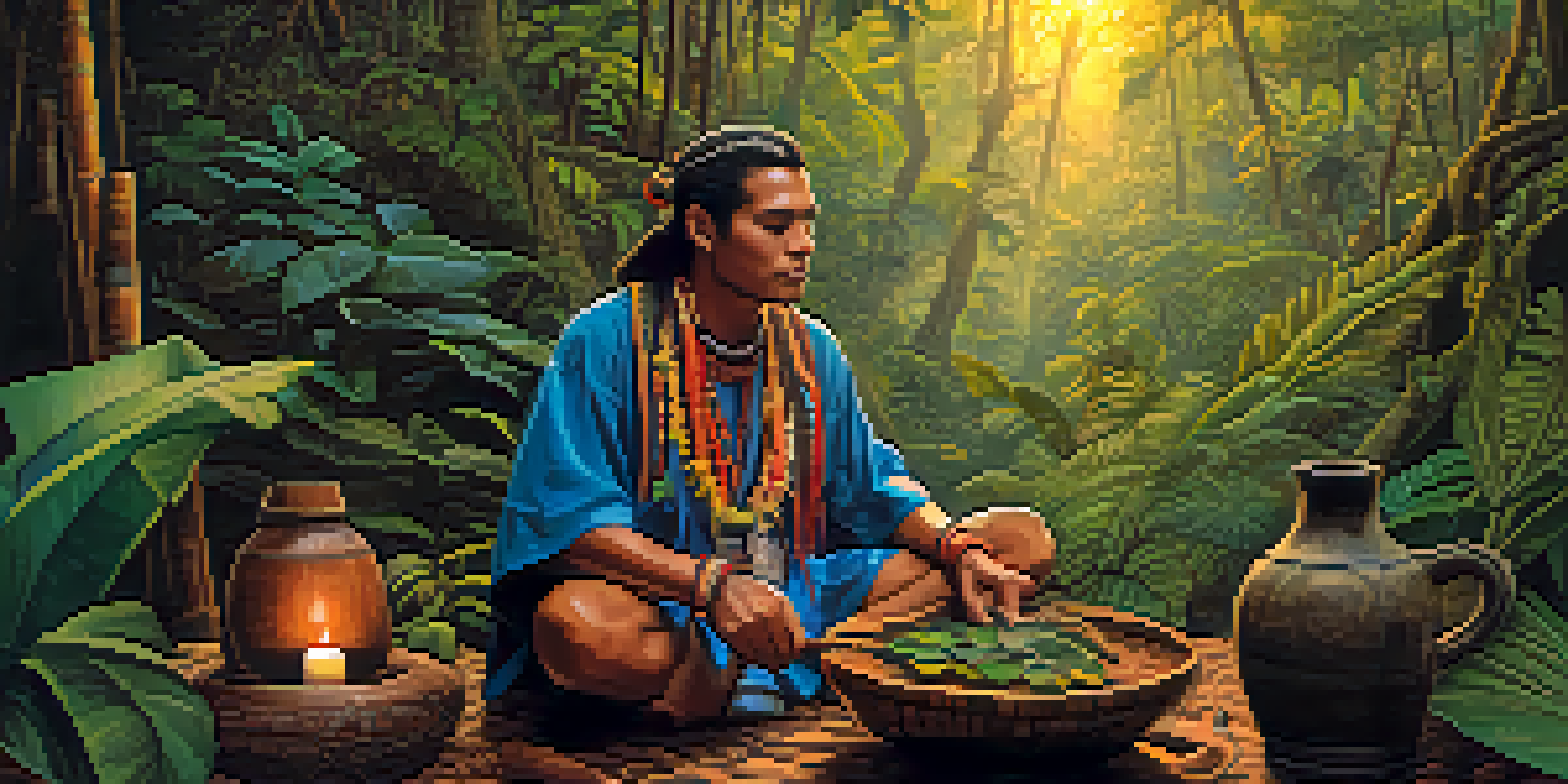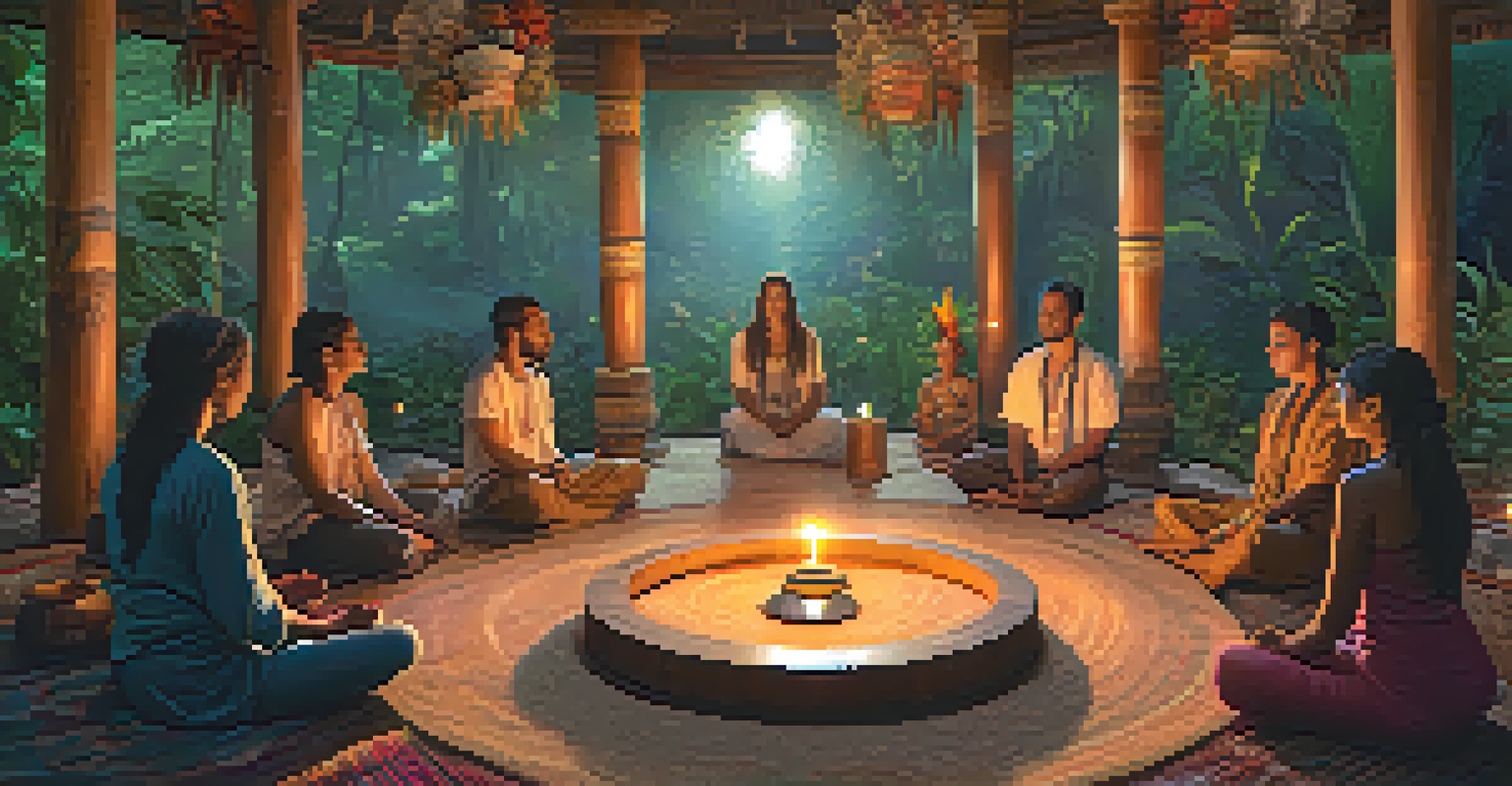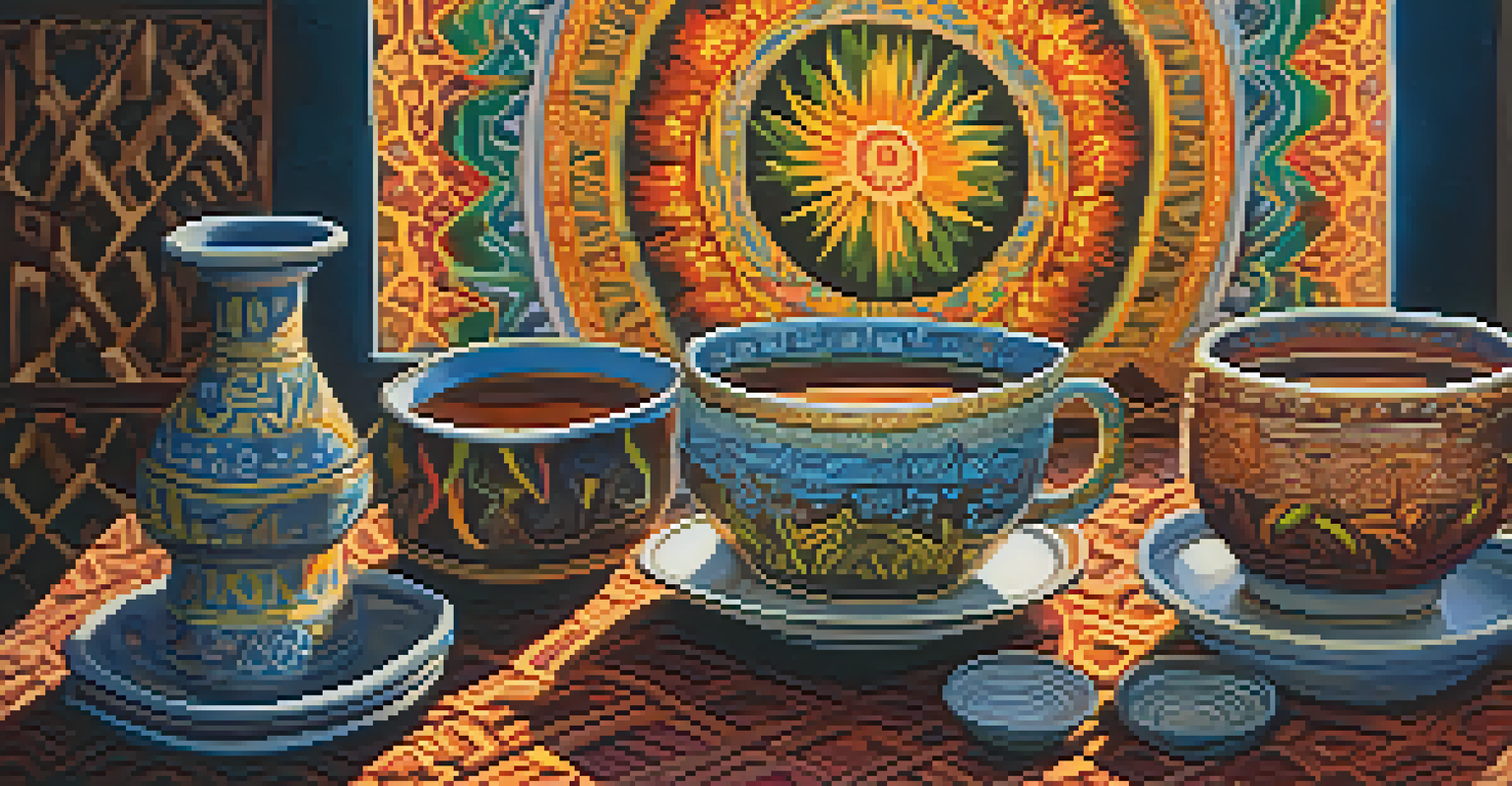Ayahuasca Preparation: Rituals and Customs in Indigenous Cultures

Understanding Ayahuasca: The Sacred Brew of the Amazon
Ayahuasca is a powerful brew made from the Banisteriopsis caapi vine and other plants, primarily used in Amazonian shamanic traditions. This sacred mixture has been revered for centuries for its psychoactive properties and its role in spiritual healing. Indigenous cultures believe that Ayahuasca allows individuals to connect with the spiritual world, offering insights and guidance.
Ayahuasca is a teacher that gently opens the door to self-discovery and healing.
The brew is often consumed during ceremonies led by experienced shamans who guide participants through their journeys. These rituals are deeply embedded in the cultural fabric of communities, serving not just as a means of healing but also as a way to strengthen social bonds. The shaman's expertise is crucial, as they interpret visions and facilitate the experience.
Understanding Ayahuasca involves appreciating its complexity, not just as a substance but as a cultural phenomenon. It embodies the wisdom of generations, reflecting a worldview where the spiritual and physical realms intertwine. This perspective is essential to grasp the significance of the rituals and customs surrounding its preparation and use.
The Role of the Shaman in Ayahuasca Rituals
In the context of Ayahuasca ceremonies, the shaman acts as a spiritual guide, playing a pivotal role in preparing the participants both physically and mentally for their experience. Shamans undergo extensive training, often apprenticing for many years to learn about the plants, rituals, and healing practices. Their knowledge is not only rooted in tradition but also in personal experience with Ayahuasca.

Before the ceremony, the shaman may conduct a cleansing ritual to purify the space and the participants. This can involve the use of sacred herbs, chanting, and other practices designed to create a respectful and safe environment. The intention is to foster a connection to the spirit world, ensuring that the participants are ready to receive the medicine's teachings.
Ayahuasca's Cultural Significance
Ayahuasca is not just a psychoactive brew but a sacred ritual deeply rooted in the traditions of Amazonian indigenous cultures.
During the ceremony, the shaman leads participants through the experience, providing support and guidance. Their presence is vital for navigating any difficult emotions or visions that may arise. The shaman's role emphasizes the communal aspect of the experience, reminding us that healing is often a shared journey.
Preparation Rituals: Setting the Stage for Ayahuasca
Preparation for an Ayahuasca ceremony often begins days in advance with dietary restrictions and spiritual practices. Participants are typically advised to follow a special diet, avoiding certain foods, alcohol, and drugs to ensure their bodies are clean and receptive. This preparation helps to enhance the effects of the brew and minimize any adverse reactions.
In the space of the Ayahuasca ceremony, we are reminded of the interconnectedness of all life.
In addition to dietary guidelines, participants may engage in meditation, journaling, or other reflective practices to set their intentions for the ceremony. This mental and emotional preparation is crucial, as it helps individuals clarify what they hope to achieve or learn during their experience. It’s about creating a mindset that is open and ready for transformation.
The culmination of these preparations is a deeper understanding of the significance of the ritual itself. Participants come to appreciate that they are not just consuming a substance but engaging in a profound spiritual journey. This awareness fosters respect for the process and the traditions that support it.
The Ayahuasca Ceremony: Structure and Significance
An Ayahuasca ceremony typically takes place at night, under the guidance of the shaman, in a designated space that is considered sacred. The atmosphere is often enhanced with music, songs, or icaros, which are traditional healing songs that help guide the participants through their journey. This sonic backdrop plays a crucial role in creating a safe and supportive environment.
As participants drink the Ayahuasca brew, they may experience a range of effects, from intense visions to emotional releases. The shaman remains present throughout the ceremony, observing and supporting each individual as they navigate their unique experiences. This communal aspect emphasizes the importance of shared healing and connection.
The Shaman's Guiding Role
Shamans play a crucial role in Ayahuasca ceremonies, preparing participants and guiding them through their spiritual journeys.
The ceremony concludes with a period of integration, where participants reflect on their experiences and insights. This debriefing is essential, as it allows individuals to process what they have learned and how it applies to their lives. The structure of the ceremony highlights its significance as a transformative experience rooted in tradition.
Cleansing and Purification: Essential Pre-Ceremony Practices
Cleansing and purification are integral components of the Ayahuasca preparation process. This can involve physical cleansing, such as fasting or using herbal baths, to rid the body of toxins and negative energies. These practices are believed to enhance the effectiveness of the Ayahuasca experience and promote overall well-being.
In many indigenous cultures, spiritual cleansing rituals are performed to prepare participants for the journey ahead. These rituals may include the use of tobacco, sage, or other sacred plants that are smoked or burned to create a purifying smoke. This practice is intended to clear the mind and spirit, allowing for a deeper connection to the Ayahuasca experience.
Engaging in these cleansing rituals signifies respect for the medicine and acknowledges the spiritual nature of the journey. Participants learn that preparation is not just about the physical act of consuming Ayahuasca but also about creating a harmonious state of being that honors the traditions and customs of the culture.
Post-Ceremony Integration: Healing Beyond the Experience
The journey doesn't end once the Ayahuasca ceremony is over; in fact, the integration phase is crucial for maximizing the healing potential of the experience. Participants are encouraged to spend time reflecting on their visions and insights, often journaling or discussing them with the shaman or fellow participants. This reflective process helps to solidify the lessons learned during the ceremony.
Many indigenous cultures emphasize the importance of community in the integration process. Sharing experiences with others who have undergone similar journeys fosters a sense of belonging and support. This communal sharing can lead to a deeper understanding of one's experiences and promote long-lasting healing.
Importance of Preparation
Participants engage in extensive preparation rituals, both physical and mental, to enhance their Ayahuasca experience and promote transformative healing.
Understanding that integration is an ongoing process allows participants to carry the insights gained from Ayahuasca into their daily lives. It reinforces the idea that the medicine offers guidance and wisdom that can inform personal growth and transformation long after the ceremony has concluded.
Cultural Respect: Understanding Ayahuasca's Indigenous Roots
Ayahuasca is deeply rooted in the traditions of indigenous cultures of the Amazon, and respecting its origins is essential for anyone interested in participating in ceremonies. These practices are not merely recreational; they are sacred rituals that have been passed down through generations. Understanding this context helps to foster appreciation for the cultural significance of Ayahuasca.
Engaging with indigenous communities and shamans is crucial for ensuring that Ayahuasca practices are upheld with integrity and respect. Many shamans emphasize the importance of consent, reciprocity, and gratitude in the relationship between participants and the medicine. This respect for the cultural context not only honors tradition but also promotes ethical practices.

By embracing the cultural roots of Ayahuasca, participants can approach the experience with a sense of humility and reverence. This perspective encourages a deeper connection to the medicine and its teachings, ultimately leading to a more meaningful and transformative experience.